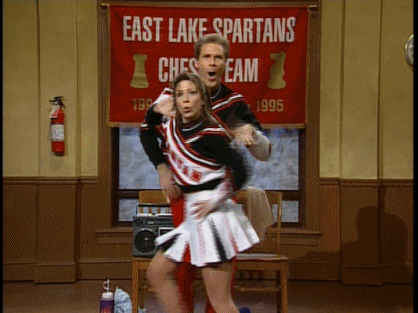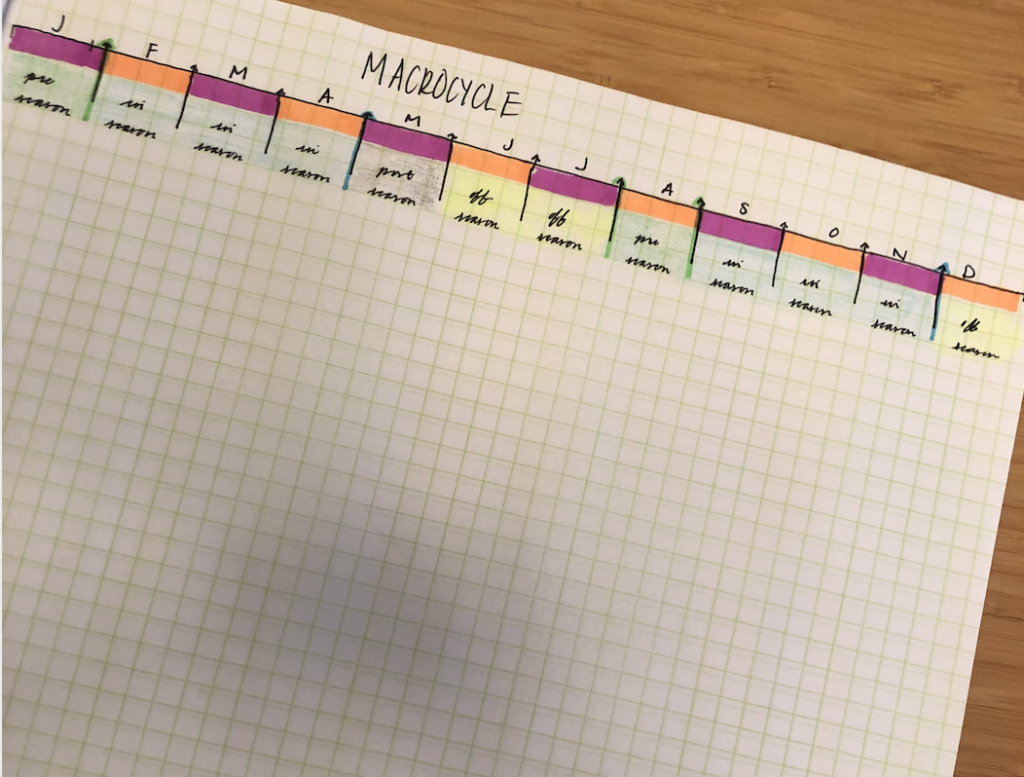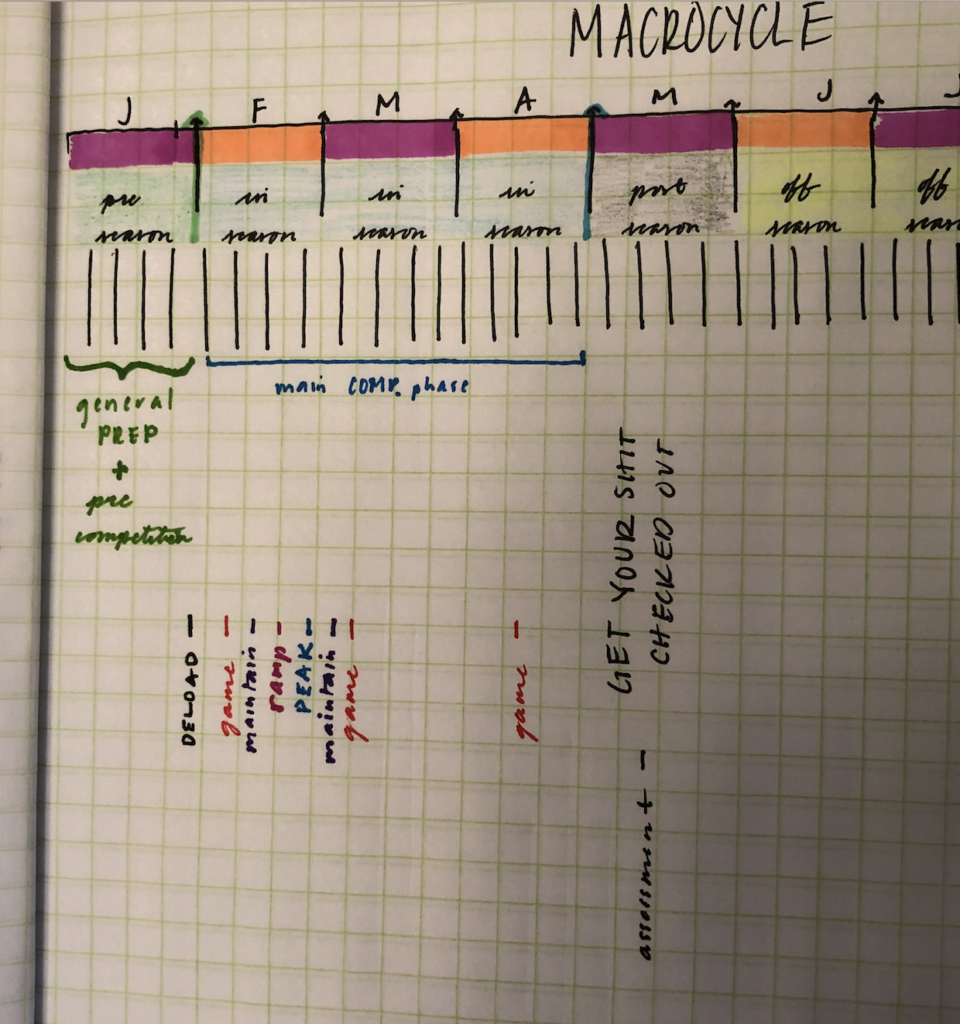
If you were to scour the globe and ask every roller derby athlete what scares them, it’s unlikely that anyone would come right out and say, “PLATEAUS. Plateaus scare me.”
But it’s probably a fear most of us harbor, deep down inside. That we’ll somehow hit a ceiling on our performance and never ever ever get any better at roller derby.
Plateaus don’t happen when you first start white-knuckling your way around the half wall at newbie practices. They don’t happen because every. single. thing. about that practice is designed to challenge you in a way that you’ve never been challenged before. Every. Single. Thing is designed to build you into a roller derby athlete that can skate so you’re constantly pushed to progress.
Once we leave the newbie nest our push to progress can sometimes drop to a gentle nudge. Or disappear altogether.
But just because the leaps and bounds of our early skating growth might be behind us ON-SKATES, that doesn’t mean you have to give up the ghost OFF-SKATES.
In other words:
PROGRESSING YOURSELF IN THE GYM CAN BOOST YOUR PERFORMANCE ON THE TRACK
And the best way to make that happen is through ensuring that your cross-training is periodized. (Yes. I’m on about periodization again. Okay?)
WHAT IS IT?

I don’t know. I don’t know.
Periodization is defined as the “long-term cyclic structuring of training and practice to maximize performance to coincide with important competitions.”* Basically it’s a planned and controlled variation in your training (of volume, intensity, and specificity) that coincides with your performance.
A lot of train in a sort of straight plodding line. Always doing the same thing because we base our training off of what we read or see in the media. That’s not BAD, but that training is designed for the general population. Not someone that laces up skates and smashes into other humans multiple times a month for points.
And then there are some skaters that (try to) train in an x=y constant progression linear slope. Always pushing themselves hard to be the strongest, fastest, bestest. That’s also not BAD, but doing it for the course of an entire season is a recipe for injury and heartbreak.
WHY DOES IT MATTER?
I mean, why does anything matter anymore, but…
Periodization is a nice gentle wave where you push, make gains, and work hard when it makes the most sense for your season. And you back off, rest and recover when you need to as well.
When used properly, it can be the perfect marriage between GAINZZZZ and NAPZZZZ. There are myriad benefits to using periodization as the foundation for your off-skates planning:
- It helps you manage your fatigue. Which in turn reduces the risk of overtraining by controlling the factors in your workout more intentionally.
- The cycling structure maintains your general fitness level. Plus helps you prepare for specific event/games/bouts within the sport.
- Gives you greater control over performance improvement. Because you are looking at your training in specific blocks, you can plan each block to optimize your improvement in any area over that time.
- Works for YOU. Periodization can help you fit your training into whatever limitations or life schedule that you might have.
- Provides a broad view of your season. And your on-skates and off-skates training and commitments. Maybe you’re not someone that likes to have everything mapped out, but I sure am!
The biggest difference for most athletes when they move to periodized training is the loss of that feeling of burnout. You still make gains with periodized training, you just do it in a more intelligent way.
HOW DO YOU DO IT?
I’m not going to lie to you, periodization can get pretty complicated. The good news is that it doesn’t have to be, especially not at first.
In order to move in the direction of periodized training, you need to start viewing your season as blocks of time. As you go through the rest of this blog post, I recommend that you have a piece of paper next to you so that you make note of what chunks of time we create.
Macrocycles
 Your macrocycle is one complete year of training.
Your macrocycle is one complete year of training.
For most roller derby athletes the macrocycle encompasses all 4 parts of the season and gives us a broad view of when our games and practices will happen as well as what our season schedule will look like overall.
However, you may find that a year includes each part of the season twice (as my current schedule does) or doesn’t encompass one part of your season for whatever reason.
This is the LADDER.
What’s the overall structure of your training time? And how long do you have to reach your biggest goals? (Whatever they may be…)
Mesocycles
Your mesocycles are typically called PHASES within your training plan. It’s a chunk of time (smaller than a macrocycle) where you have a specific training objective and all of the pieces of your periodization plan that you have will aim you toward that goal within your mesocycle.
Most mesocycles are 3-6 weeks long. It’s a large window because some of that depends on things like practice intensity and game schedules.
These are your RUNGS.
They give you the mechanism for climbing your ladder, can bring the goal closer to you, and are more readily accessible goals to help keep you motivated.
Microcycles
What are you doing this week? That’s the question that microcycles ask.
If you’ve determined the macrocyle and mesocycles within your training year, then this is where the veggies come in (not the meat and potatoes, though, not yet). A microcycle helps you determine HOW you’ll use a particular week to reach the goals of your current mesocycle.
If we go back out our ladder analogy, this is about HOW MANY RUNGS you’ll climb in a given stretch.
Some microcycles will be a hard intense push. Some will be a solid steady coast. Some will be an easing back. And that’s okay.
Training Days
The smallest section of your periodization schedule is often the place that most athletes START when it comes to training: What am I doing in the gym today?
But what you do in the gym each day becomes MORE effective if it happens within a framework that aims you at your goals. That means you aren’t just showing up and going through the motions, but you’re putting the work in today so that you can reach the goal at the end of microcycle, mesocycle, and macrocycle.
This is where you actually put in the work to CLIMB THE LADDER.
Not every training day or microcycle requires the same amount of work. And that’s all part of the bigger picture.
Think about your periodized training like this:
It doesn’t make sense to climb a ladder that isn’t there. So writing out and planning out your periodized plan is about building a ladder that you can climb to take you where you want to go.
*Verkhoshansky, Y., “Sport Strength Training Methodology”. Comment on Magnush. 2007
Want more?
If you’re interested in more exclusive content, access to my FREE resource library, and the slightly weird workings of my inner mind, you can sign up for the Iron Octopus Fitness email list HERE. Wherein I harass you weekly with all things intelligent cross training, mindset, and…other.




[…] the first part of the athlete’s periodization guide, I gave the broad brush strokes of what makes up a periodized training season: macrocycles, […]